After the 2024 Land Law was promulgated and took effect from August 1, issues related to land use right certificates (red books) have received a lot of attention. One of the major changes to this type of document is the form of the red book.
Red book will have a new name
In fact, red book is not a term used in the Land Law or any detailed guiding documents or regulations. This is a common name according to the color of the land use right certificate that people often use.
According to the 2013 Land Law, the red book is the name of the Certificate of land use rights, house ownership rights and other assets attached to land. In the 2024 Land Law, the red book is the name of the certificate of land use rights, ownership rights of assets attached to land. Thus, according to the new regulations, the name of the red book is changed to be more concise than before.
Unify a new red book model
The Ministry of Natural Resources and Environment is drafting a Circular regulating the Certificate of land use rights, ownership of assets attached to land and cadastral records.
The draft clearly states that the Certificate of land use rights (pink book, red book), and ownership of assets attached to land (Certificate) are issued by the Ministry of Natural Resources and Environment according to a unified form and are applied nationwide for all types of land and other assets attached to land.
The Certificate consists of a sheet of 2 pages, printed with a pink bronze drum pattern background (called the Certificate blank), measuring 210 x 297 mm; including the following prescribed contents:
Page 1 of the Certificate includes the following contents:
- National emblem;
- National emblem;
- QR code;
- The name "Certificate of land use rights and ownership of assets attached to land" is printed in red;
- Section "1. Land users, house owners and property owners attached to land";
- Section "2. Land plot information";
- Section "3. Information on assets attached to land";
- Section "4. Notes";
- Section "5. Land plot diagram";
- Place name, date of signing the Certificate and the agency signing the Certificate in the bottom right corner of Page 1 of the Certificate;
- Notes for Certificate holders.
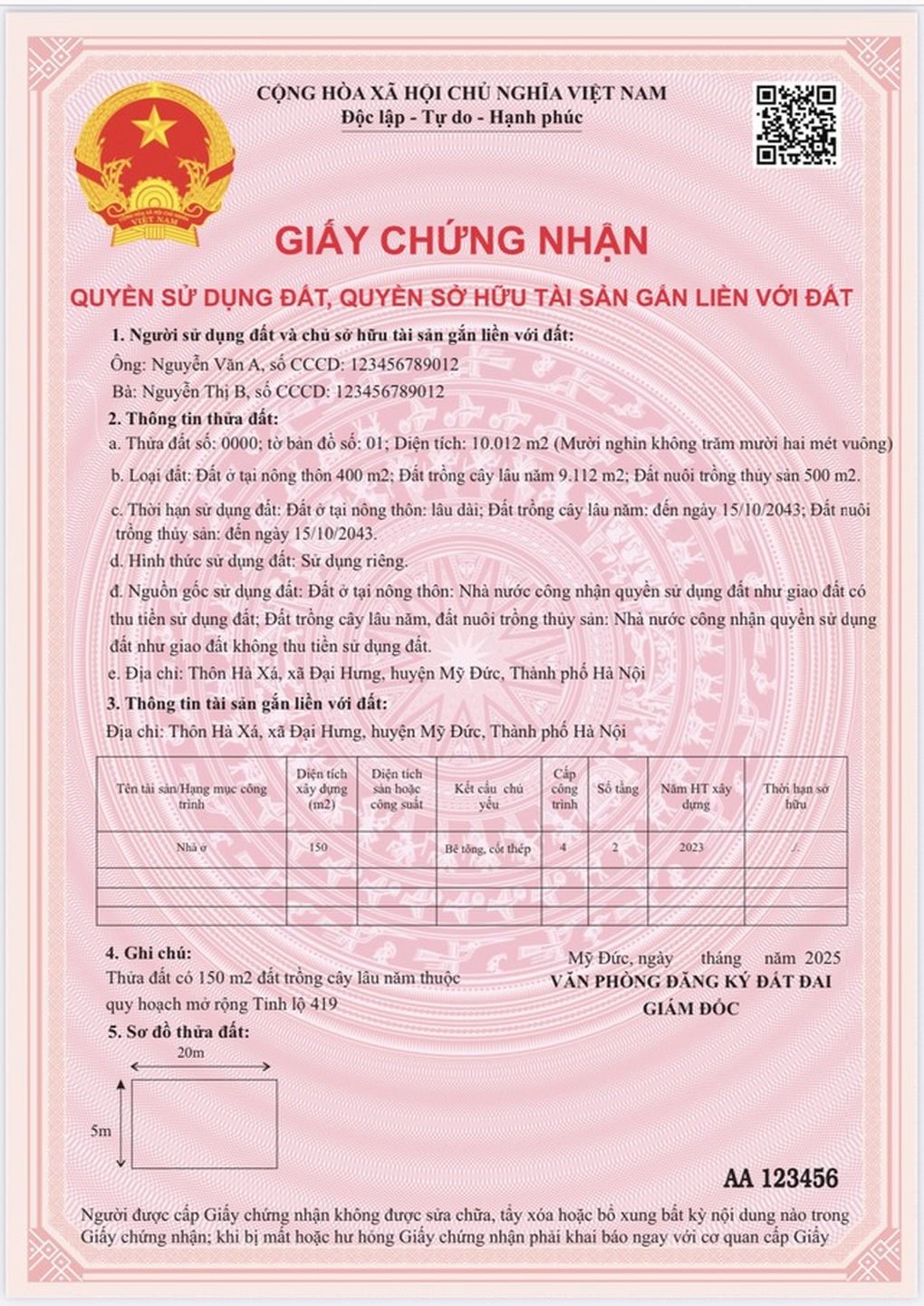
Page 1 of the new red book model as planned (Photo: Chinhphu.vn0.
Page 2 of the Certificate includes the following contents:
- Section "6. Changes after issuance of the Certificate:";
- Certificate issuance book number.
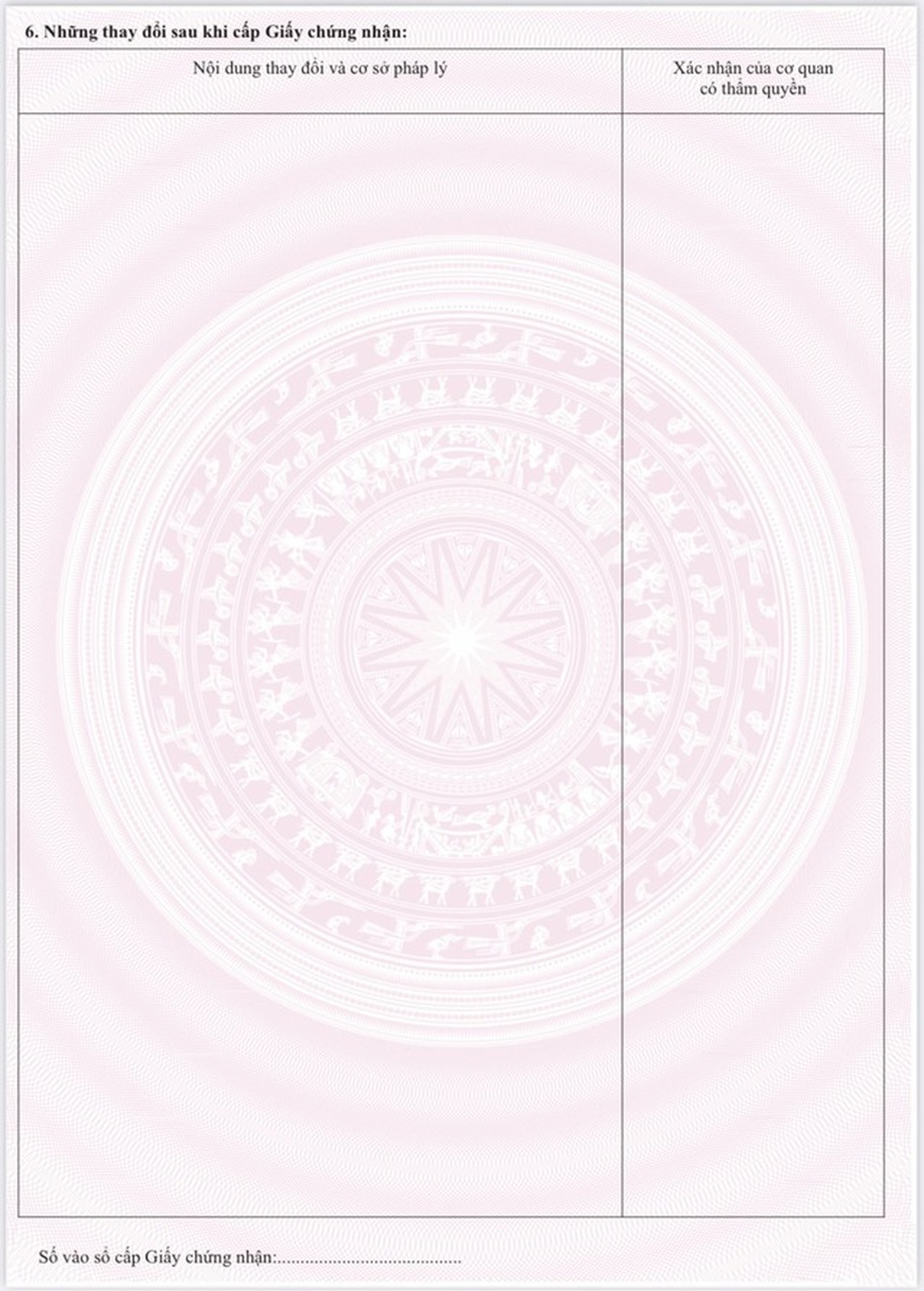
Page 2 of the new red book form as planned (Photo: Chinhphu.vn).
According to the draft, the QR code on the red book is printed by the agency issuing the red book and is used to look up information on the red book. The purpose of the QR code is to prevent counterfeiting of the certificate and ensure the security of the red book.
In the previous red book form, there was no QR code but a barcode and a series of positive integers printed at the end of page 4, which could include 13 or 15 digits, used to manage, look up information, and issue records.
Thus, the new red book model is expected to have a QR code similar to the documents already used such as citizen identification cards and health insurance cards.
Source: https://dantri.com.vn/bat-dong-san/2-thay-doi-lon-nhat-cua-so-do-moi-theo-luat-dat-dai-2024-20240713162736365.htm








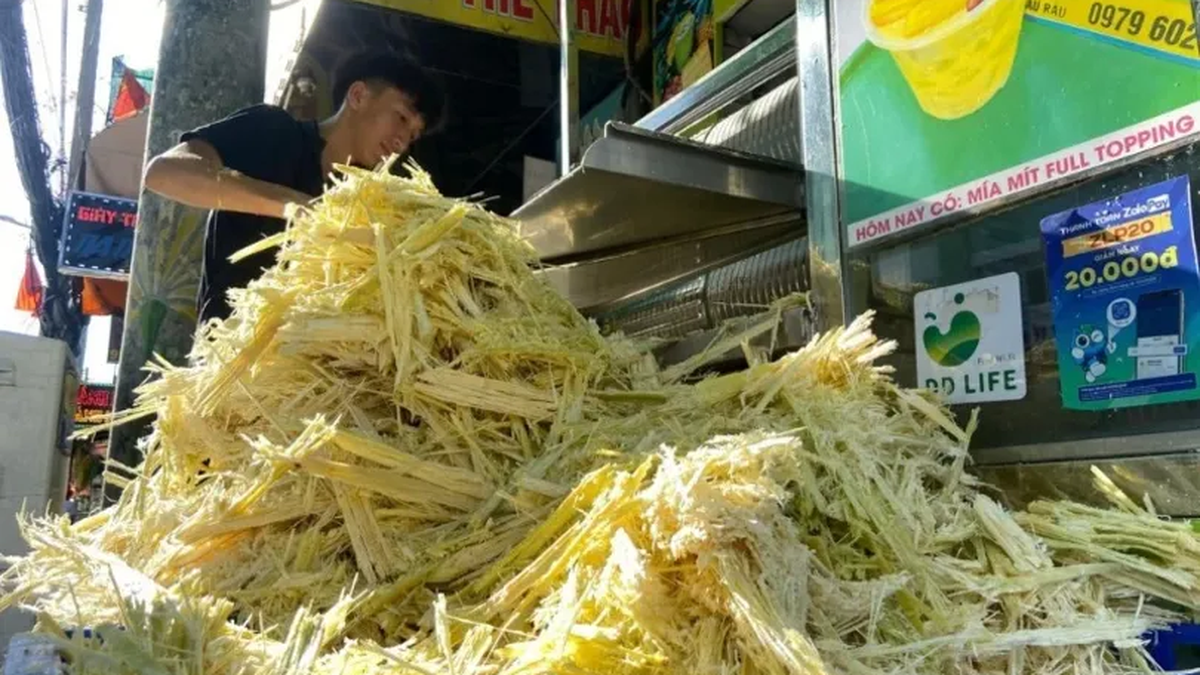























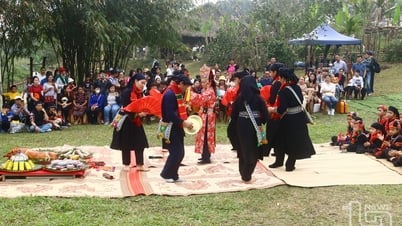

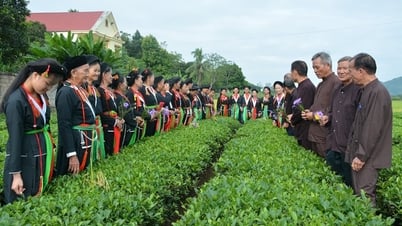















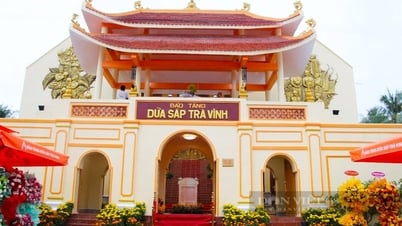


























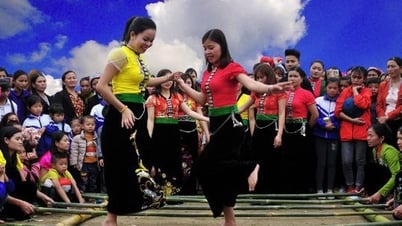
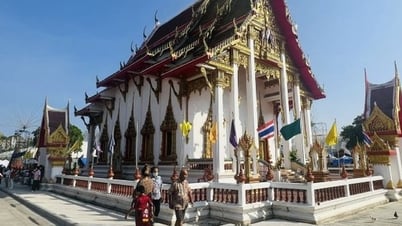






















Comment (0)